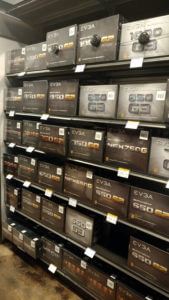 In this article, we have traveled across the land, searching far and wide all within the 3-mile internet radius for a whole 15 minutes just to be able to guide you to the best choice among these 15+ different EVGA PSUs. Knowing EVGA historically, they always have this big time tradition of making the product naming scheme an occasional prank for end users. It’s never an easy way to find which one is the right EVGA product for your system. I guarantee it.
In this article, we have traveled across the land, searching far and wide all within the 3-mile internet radius for a whole 15 minutes just to be able to guide you to the best choice among these 15+ different EVGA PSUs. Knowing EVGA historically, they always have this big time tradition of making the product naming scheme an occasional prank for end users. It’s never an easy way to find which one is the right EVGA product for your system. I guarantee it.
I remember that one time when we had to compare EVGA video cards? Like how the GT versus GTX versus Ti versus REF versus SC versus SCC versus FTW DT versus Classified really differs to one another. Also don’t forget iCX vs. ACX.
Well you get the idea. And we aren’t talking EVGA motherboards yet.
Some of the staffs are still on frequent oxycodone treatment, delivered exclusively by Hector Salamanca’s crew, if something happens to remind them vividly of what we had been through during that article research. But it’s all good now, the dust has settled in their mind. Unless there is another comparison for EVGA products to do.
…And yet here we go again.
But the silver lining is, we both will certainly learn a great deal about the EVGA power supply units at the end of the day: their features, the techs, the differences in cable management as well as what celestial advantages offered by the high-end power supply models that make them so expensive and my wife never gets it.
So let’s begin!
First, the price of these EVGA PSUs has a lot to do with the chart below. Refer to it along the way to help you better pick the best fit unit for your build/wallet/SO’s approval/political view.
80-PLUS Efficiency Compare |
||||||
LOAD |
|
|
|
|
|
|
10% |
90% | |||||
20% |
80% | 82% | 85% | 87% | 90% | 92% |
50% |
80% | 85% | 88% | 90% | 92% | 94% |
100% |
80% | 82% | 85% | 87% | 89% | 90% |
Content |
| EVGA Power Supply family comes in 5 different models, each has several own sub-models and different wattage ratings. The trick is, the color of the logo usually indicates the efficiency level of the PSU. Maybe.
And also W is White, B stands for Bronze, G is Gold, P is Platinum and T is Titanium. Simple right? …You’ll see. *This table of content also appears on the right sidebar on your desktop screen later as you scroll along the article, whenever it feels like to. |
The W line is one of the two entry-level power supply units in EVGA PSU family and it’s internally-complicated. Things only start to reveal when you look carefully at the model numbers: there are W1 and N1 series.
In fact, there used to be a N Series separately sold at Microcenter; but it looks like EVGA merge them into one box design. However, the N1 means it’s non 80-PLUS certified.
– First the W1
Surprisingly, the W after the big bold number indicating the wattage pronounced as.. W, not “watts” as nobody might have thought.
– Here’s the N1
The box design of W1 and N1 look almost the same, while the N1 has slightly brighter background color.
The good news is you should be able to find these PSUs at a fairly affordable price. From the look at our local Microcenter’s inventory, you can definitely get the 400W model as low as $19.99 after the rebate ($24.99 w/o). That puts it on the similar price tag as Microcenter in-house brand Inland PSU or 153 medium-size bananas.
I know what comes to your mind, they must be sub-par in quality due to the amount of banana worth. But under our testing environment and even resides in some of CPG Staff’s media center PC for a long time, those bananas definitely have a lot of potassium. On the other hand, these PSUs have proven themselves to be very consistent in power delivery and stability without random failure, or causing BSOD which we fear –as long as they are under normal stress parameters. Don’t make them work 9-hour shift then come home and see the gf cheating while child support is due next week and that unjustified parking ticket also isnt going to pay for itself.
And that also means you shouldn’t overload the 400W/430W unit running GTA V on a GTX 1070 max settings at any time.
So we obligingly tried that.
Though it didn’t give up but hearing the fan crying for its life every passing minute is depressing. We just have to accept the fact that doing such cruel thing on an entry-level PSU is a crime and that will quickly deteriorate its life span faster than the manufacturer’s MTBF; sooner or later it could cause collateral damage to other PC components. Lots of uninformed novice does this, end up killing the PSU/MOBO/CPU/RAM/GPU combo and blame the manufacturer for this. It’s not very fair, Jenny.
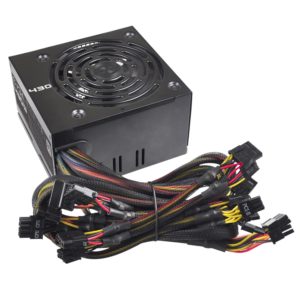 So what we like about the W1 series is they are inexpensive, have 80 PLUS power efficiency rating, all sleeved cables, on/off switch in the back and a pretty quiet fan all around. Dimension wise, it’s not so big either –slightly larger than an adult hand and weighs just approximately 3 lbs. “But be careful lifting it.” –Strongly advised by one of our staffs who just recently started working out and got wrist injured.
So what we like about the W1 series is they are inexpensive, have 80 PLUS power efficiency rating, all sleeved cables, on/off switch in the back and a pretty quiet fan all around. Dimension wise, it’s not so big either –slightly larger than an adult hand and weighs just approximately 3 lbs. “But be careful lifting it.” –Strongly advised by one of our staffs who just recently started working out and got wrist injured.
Now since you’re wondering, the noticable difference between the W1 and N1 is power efficiency and warranty. The W1 are all 80-PLUS rated while the N1 are 80-PLUS non-rated. That means N1 is roughly 75% efficient or less, while the W1 is hovering a bit above 80%. One is slightly more energy efficient than the other; but in normal, light duty use you may not gain any significant benefits between the two. So don’t let that be the most driven factor to your decision til you get further in the game.
From basic work PC build, Plex server, a media center to a entry-level gaming rig, the W/N series can deliver everything you need and still leaves plenty of room in the wallet for other component purchases. In short, the W1/N1 are budget PSUs that can handle well with many variations to choose from –if power efficiency is not something you’re not too crazy about.
Now on the other hand, drawbacks are the manufacturer warranty is short —2-year for N1 or 3-year for W1 and the operating temps of the N1 is between 32°F-77°F while the W1 is 32°F to 104°F. The lower the temperature tolerance, the less reliable and safe the PSU becomes when it gets too hot; which may cause random shutdown or shortening the lifespan of the product during overload. If worst, it may catch fire.
More over, cable management is practically non-existent because neither one of the two is semi-modular or fully-modular. You’ll find you yourself with a pack of heavy hardlined sleeved cables coming out on one end of the PSU (but that’s a standard back in the day, isnt it?). With some careful placement, you may make it work and open up room for proper ventilation –so it’s really not the end of the world.
Then, one last possible deal breaker is that the W/N series does not have Japanese capacitors; Also the bottom-line N1, compared to W1, lacks UVP (Under Voltage Protection), OCP (Over Current Protection) and OTP (Over Temperature Protection) which may means they are not made to be for daily heavy-duty usage.
- EVGA 550W N1 Series
- Fan size / Bearing: 120 millimeter sleeve bearing - quiet and intelligent auto fan for...
- Heavy-duty protections, including OVP, UVP, OCP, OPP, and SCP
- 2 Year & EVGA's 24/7 technical support
vs.
- EVGA 500 Watt; Unbeatable value
- 80 plus white certified, with 80 percentage efficiency or higher under typical loads
- Heavy duty protections, including OVP (Over voltage protection); UVP (Under voltage...
- 3 year warranty
From the W series to the B series, our first impression is the 80-PLUS bronze logo widely appears on the box. This means the unit is slightly more efficient than the W series. Though the B series has a fairly large selection, they still all belong to the mainstream category as the W series. Experienced PC builders can look into these options for their light-duty work build, casual gaming rig, or a PSU replacement for your customers.
1. EVGA BT Series
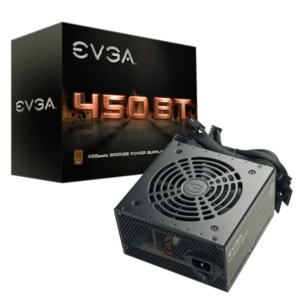 The 450BT is the most basic unit of the entire EVGA B Series PSUs. The T in BT stands for “sTandard”. But maybe that’s bullshit I made up because it would have been “BS” series if it was Standard. I don’t know, please comment if you have an idea. Bronze Thug?
The 450BT is the most basic unit of the entire EVGA B Series PSUs. The T in BT stands for “sTandard”. But maybe that’s bullshit I made up because it would have been “BS” series if it was Standard. I don’t know, please comment if you have an idea. Bronze Thug?
Anyway, this model is manufactured by Super Flower, a well known Taiwanese company for quality PSUs which is very surprising. Super Flower does some of the high-end PSU platforms for EVGA like the G series below.
Sorry I digress, but the 450BT comes under a very affordable price tag despite its many great features. It has 80-PLUS bronze, sleeved cables, 35A on the +12V rail, 3-yr warranty, Teapo 105°F-rated capacitors, 18-gauge wire and ceramic fuse. So far sounds good. Now the drawbacks.
The 450BT is non-modular PSU so hardlined cables are expected. Similar to the W series, 450BT relied on Globe-brand sleeve-bearing 120mm fan to cool down the components when heat arise.
Rated at 80 PLUS bronze, this unit delivers up to 82% efficiency at 20% and at 100% load; half load is up to 85% efficiency. In the ideal world, when the system needs 300W of power and max load from the PSU, the 450BT should draw up to 354W from the outlet (82% efficiency + 18% wasted as heat).
Unfortunately in our reality dimension, temperature can greatly affect the outcome. The 450BT has an ideal operating temperature range quite small, at 32°F to 86°F.
It tolerates heat a little better than the N1 series but not as good as the W1, which means performance might suffer. For example, if it gets very hot inside the chassis (86°F and above), you may only get between 100W to 200W of continuous power delivery instead of the advertised 450W –efficiency rating no longer plays a role under this situation, you see. Which reminds me of an advice from uncle Iroh the other day:
A good chassis with plenty ventilation is like a foundation to the castle, very important oh, on the health and performance of the system at a whole, dear young builder.
- EVGA 450 BT: Great Quality, Great Value
- 80 PLUS Bronze certified, with 85 percent efficiency or higher under typical loads
- Fan Size / Bearing: 120 millimeters Sleeve Bearing; Quiet and Intelligent Auto Fan for...
- 3 Year and unparalleled EVGA Customer Support
2. EVGA B Series
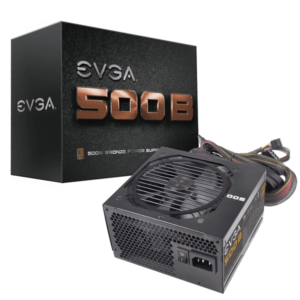 Inherited most of the genes of the 450BT above, the B series are also very affordable non-modular, Bronze-rated PSUs.
Inherited most of the genes of the 450BT above, the B series are also very affordable non-modular, Bronze-rated PSUs.
There are not a lot of differences between the BT and B models, except the incremental changes in wattage and amps. First thing that might matter to folks oversea is unlike the B series, 450BT model does not have safety certification in Taiwan (BSMI) and China (CCC). Most likely due to the change from 110V to 220V usage. Another important difference is the operating temperatures.
In summary, the B series is up to 85% efficient, has sleeve bearing variable-speed 120mm fan that runs all time (no ECO mode where the fan stops under system idle/low load), hardlined and sleeved output power cables, comes with 3-year warranty, operating temps are between 32°F to 104°F.
Power protection techs are Over Power Protection, Under Voltage Protection, Over Voltage Protection, Short Circuit Protection, Over Current Protection –which are similar to 450BT. However, the B series also has Over Temperature Protection where the BT450 does not.
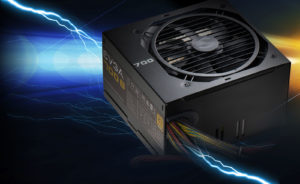 In 2015, the 700B was introduced and it became the flagship model of the B series.
In 2015, the 700B was introduced and it became the flagship model of the B series.
This particular PSU supports SLI/Crossfire and carries 56A on its +12V rail. That’s a lot of power to build a budget performance system and overclock the bejesus out of it. I’m looking at you AMD Ryzen. Not because I have stock in AMD, but everyone seems to agree AMD has done a super great job of coming back in the fight with Intel lately.
- EVGA 600 B1 - "Performance Meets Value"
- 80 PLUS Bronze certified, with up to 85% efficiency under typical loads
- Fan Size / Bearing: 120mm Sleeve Bearing
- Heavy-duty protections, including OVP, UVP, OCP, OPP, and SCP
3. EVGA BQ Series
Think of BQ series is the fancy brother of the BT and regular B, because you get:
- Semi-modular power cable design instead of hardlined.
- All BQ models support SLI or Crossfire. Only the 700B of the regular B series supports SLI/Crossfire.
- Fluid dynamic-bearing 120mm cooling fan for models lower than 650BQ. Model 650BQ and above are equipped with a more hefty, Teflon Nano steel-bearing 140mm fan that runs near silent.
- All BQ models have the optimal operating temps between 32°F to 104°F.
- Warranty is up to 5-year instead of 3-year of the B Series.
- 850BQ model has 12A on CPU power delivery while the rest of the B family has 10A or less. Something to note if you like to overclock the processor.
- EVGA 650 BQ "great quality, Great value"
- 80 plus Bronze certified, with 85 percent efficiency or higher under typical loads
- Fan Size/ Bearing: 140 millimeter Teflon nano steel Bearing quiet and intelligent auto fan...
- Heavy duty protections, including OVP, UVP, OCP, OPP, and SCP
4. EVGA B3 Series
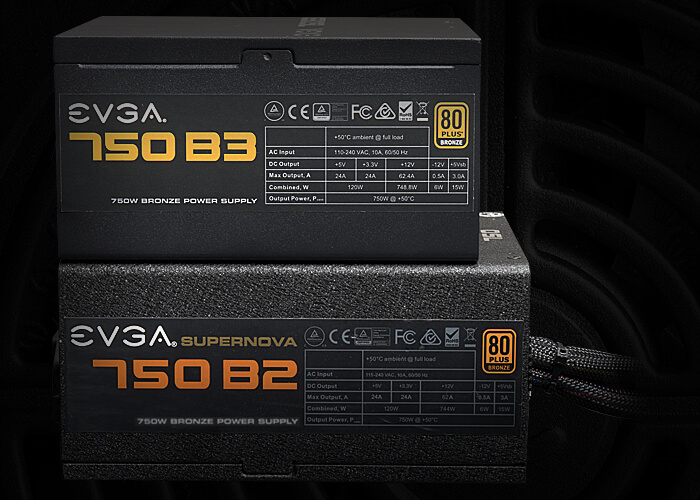
B3 is not only the fancy but also extra-dandy and thug bro in the B family. Like comparing Jimmy McGills to Saul Goodman. Not neccessary all better –because no one’s perfect due to life circumstances– but the B3 has some specific upgrades catered to its own niche market.
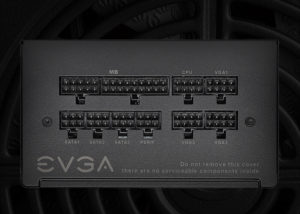 However, in order to remain affordable, there are corners to be cut.
However, in order to remain affordable, there are corners to be cut.
- Only series in the EVGA B family that’s fully modular.
- Operating temps between 32°F to 122°F.
- Up to 88% efficiency which is near Silver 80-Plus.
- 130mm Long life sleeve-bearing fan –so smaller than BQ but larger than B/BT.
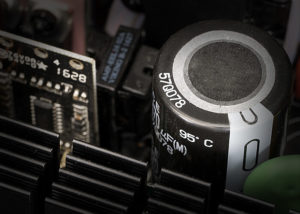 750 B3 and 850 B3 have 100% Japanese capacitors.
750 B3 and 850 B3 have 100% Japanese capacitors.- 450 B3, 550 B3, 650 B3 has mainboard Japanese capacitor.
- Supports ECO Mode where the fan does not run if system is under light to no load (less than 40%).
- More compact in size compared to previous B2 models.
- Tighter 12V regulation (< 2%)
- 5-year warranty.
- EVGA 750 B3 - "Bronze 3volved"
- Fully modular to reduce clutter and improve airflow
- 80 plus Bronze certified, with 85% efficiency or higher under typical loads
- Fan Size/ Bearing: 130mm Long Life Sleeve Bearing - EVGA eco Intelligent Thermal Control...
Just about you think you’re getting a hang of PSU naming scheme from what we’ve learned about the B and W series, EVGA marketing team uses CONFUSION and it’s a critical hit to self-confidence!
The G series have G, G+, G2, G3, GQ and GS as the counter attack moves to our knowledge. So let’s seriously get the library out of the Lamborghini account and own this round on Beverly Hills.
1. G and G+ Models
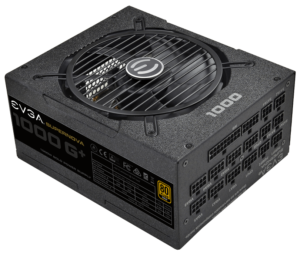 Also commonly known as G1 and G1+. The G series in general, is quite a step up from the B series above.
Also commonly known as G1 and G1+. The G series in general, is quite a step up from the B series above.
The G and G+ models are manufactured by FSP GROUP –another reputable Taiwanese OEM supplier in the PC world; well known for manufacturing reliable stuffs, where they also occasionally make Samsung battery department team a little envious. If you have a chance to disassemble your G power supply without committing suicide, you’re gonna see, some great soldering works in there.
Suddenly something reminds me of the San Francisco song. How about let’s take a random break to enjoy this lovely music again. Just let it play in the background.
Now continue on…
The first generation G (G1) is being phased out and replaced by the G+ (G1+) but we’ll talk about it just so you have an idea. We could use that as a foundation for further comparisons. Once you tap into G series and its premium cost, here are what you’ll get with the entry G models:
- Fully modular power cable management
- 100% Japanese capacitors
- Operating temperature range between 32°F to 122°F.
- LLC Resonant Circuit (full DC to DC for better efficiency).
- Supports SLI/Crossfire.
- 10A on CPU power delivery
- 80-Plus Gold means it’s 90% or higher efficiency.
- Dual ball-bearing 135mm fan.
- Multi-rail design.
- No ECO Mode (fan always runs).
- 10-year warranty on 750W models and above, otherwise 7-year warranty.
G+ models were released as an upgrade to the G series, a long overdue since 2013. In most case, the G+ is even more affordable than the G models. So it’s a no-brainer if your budget fits right in. Now, while essentially inherited nearly all aspects of the G model, here are a few differences of the G+:
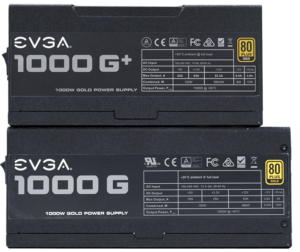 Redesigned for a cleaner internal layout, results in better ventilation.
Redesigned for a cleaner internal layout, results in better ventilation.- Adds Variable Resistor module to increase voltage stability.
- 2 x DC to DC modules, instead of one, for more efficient power switching.
- Generally, G1+ models are 10mm-20mm shorter than its older siblings.
- Single-rail 12V design.
- Tigher 12V load regulation from 3.76% down to 0.52% for more stable power delivery.
- Fluid dynamic ball-bearing 135mm fan = less noise (24dB vs. 30dB on G model).
- Still No Eco Mode. This is the key difference when you come to the G3 model below.
2. G2 Models
It’s like going backward from the newer G+, since this G2 is an older unit. But here is what have changed from regular G to G2 in their own timeline –first you get all the similar goodies:
- Fully modular power cable management
- 100% Japanese capacitors
- Tight 12V regulation (< 1%)
- Operating temperature range between 32°F to 122°F.
- Supports SLI/Crossfire.
- 10A on CPU power delivery, up to 15A on top end models.
- 80-Plus Gold means it’s 90% or higher efficiency.
- 10-year warranty on 750W models and above, otherwise 7-year warranty
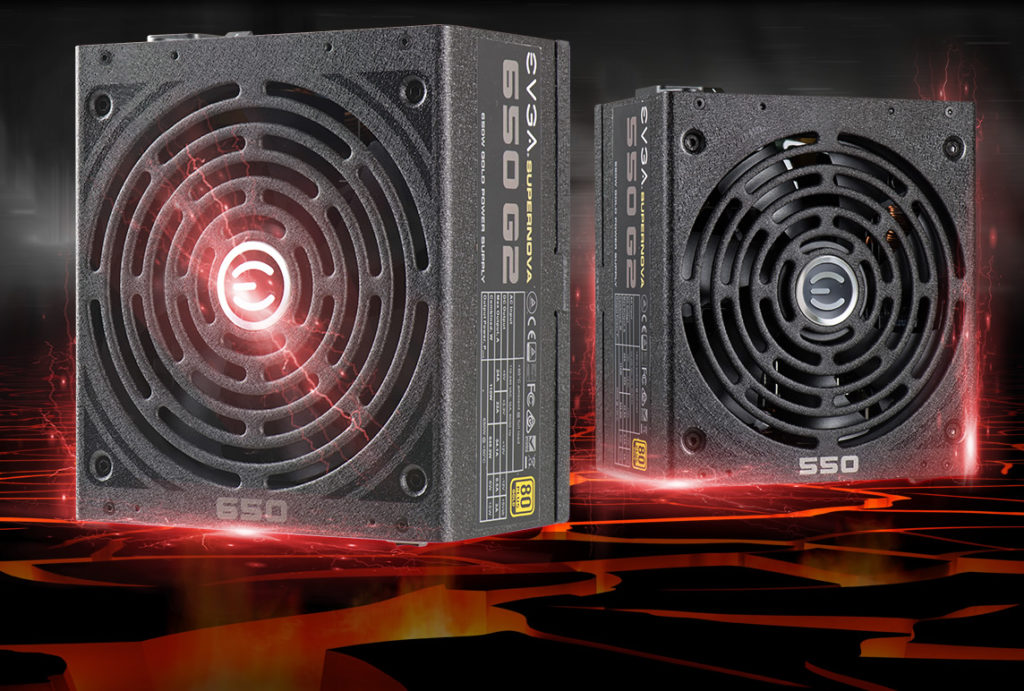
Now, the advantage differences between EVGA G2 and G power supply units:
- Dual ball-bearing 140mm fan, instead 135mm.
- Single-rail 12V design instead of mutiple-rail.
- ECO Mode –fan will turn itself off if there is no or low load (example).
- G2 is made by SuperFlower while the G and G+ are manufactured by FSP.
So that’s a slight upgrade for G2, especially it having the ECO Mode where even the G+ models do not. This is a valuable option for builders who believe silence is golden –like those of us who have married for 10+ years. Though technology-wise the G2 is still a step behind the G+, it’s a solid built PSU.
- EVGA 750 G2 - "Next Generation In Power"
- 80 PLUS Gold certified, with up to 90% efficiency under typical loads
- Fan Size / Bearing: 140mm Double Ball Bearing
- Heavy-duty protections, including OVP, UVP, OCP, OPP, and SCP
3. G3 Models
With great success and momentum of the G2 in that year, EVGA gave their team the nod to start the G3 models with Super Flower. In fact, the G3 was the foundation for the G+ later on. It sure feels like time-traveling right. Let’s see what the G3 has to offer.
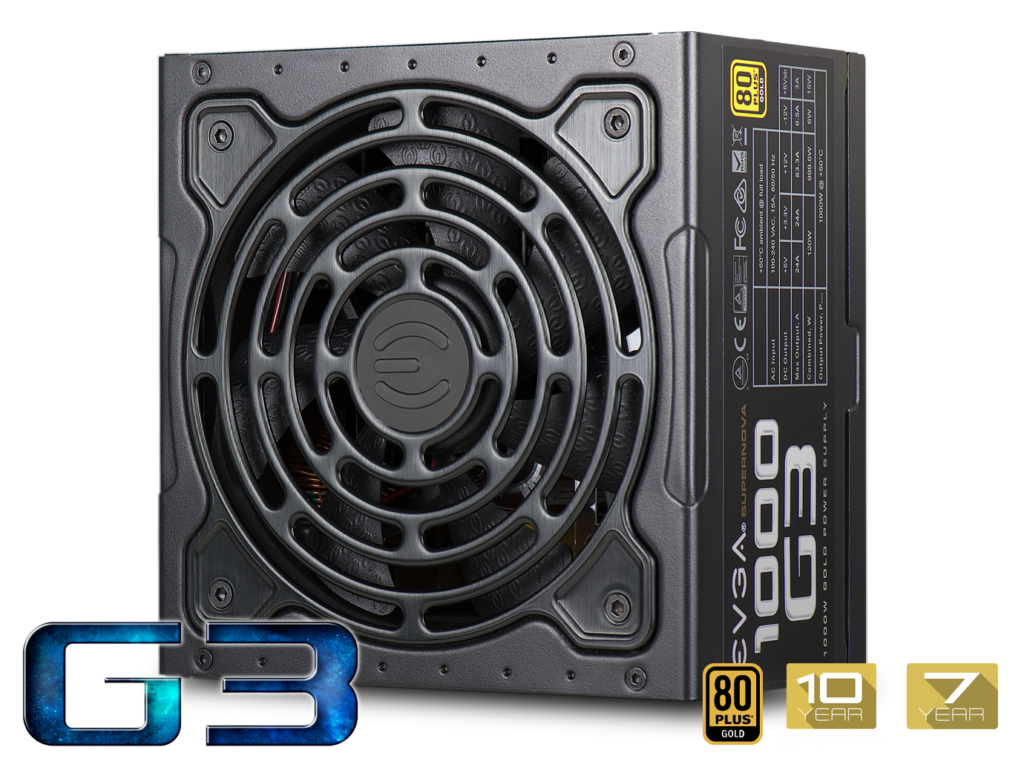
- Fully modular cable management.
- 100% Japanese capacitors
- Operating temperature range between 32°F to 122°F.
- Supports SLI/Crossfire.
- 10A on CPU power delivery, up to 15A on top end models.
- 80-Plus Gold means it’s 90% or higher efficiency.
- Tight 12V regulation (< 1%)
- While The G2 length is varied between 165mm (6.5″) to 200mm (7.8″) depends on the model wattage, the G3 remains a solid 150mm (5.9″) all across its line-up. It’s the most compact, light-weight and best looking PSU yet in the G series.
- Fan size is only 130mm vs. 140mm of the G2.
- Instead of dual-ball bearing (G2) or Fluid-dynamic bearing (G1+), the G3 implements Hydraulic-dynamic bearing. If you start to wonder which one is best, just know that sleeve bearing fan has the shortest lifespan and most unreliable between all these bearing options. Then on other hand, Fluid/Hydraulic-bearings are pretty much just the same type and the most silent, long-lasting fan technology for your PC components.
- G2 and G3 has ECO Mode.
- 7 to 10-year warranty depends on models.
- Manufactured by the great Super Flower that we mentioned in EVGA 450BT model above. The G3 models are similar to the platform of the OEM’s top of the line Leadex models. You will be in good hand.
- EVGA 750 G3: The next generation in power
- 80 Plus Gold certified, with 90 percent (115VAC) / 92 percentage (220VAC to 240VAC)...
- Fan size/Bearing: 130 millimeters Hydraulic Dynamic Bearing for ultra quiet performance
- Heavy duty protections, including OVP, UVP, OCP, OPP, and SCP
4. GQ Models
Like how the G2 births the existence of G3, you bet EVGA could dial G+ down a notch and gives life to the GQ models. Take nearly everything the G+ models hold dear then give some to the GQ and we have a more affordable, high quality PSU for the slightly less enthusiast builds. Mid-range gaming PC it is.
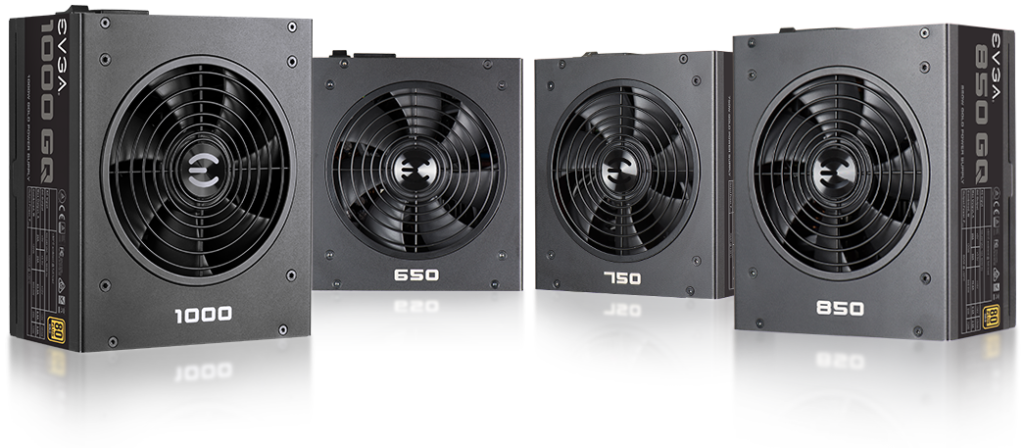
So with a budget-oriented goal in mind, let’s check out the GQ specs:
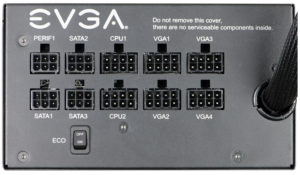 Semi-modular cable management. Hardlined ones are sleeved and the plug-in cables are flat.
Semi-modular cable management. Hardlined ones are sleeved and the plug-in cables are flat.- 100% Japanese capacitors
- Operating temperature range between 32°F to 122°F.
- Supports SLI/Crossfire.
- 10A on CPU power delivery, up to 16A on 1000-wattage model. I’m surprised because the 1000G3 has only 15A on this rail.
- 80-Plus Gold –90% or higher efficiency.
- Fluid dynamic ball-bearing 135mm fan just like the G+.
- Great 12V regulation (< 1%)
- “Only” 5-year warranty. I think my Amex card ($200 back) adds a year on top of that, which is good. Check with your credit card issuer before purchase, if this is something you’re OCDed about.
- Has ECO Mode.
- Manufactured by the FSP, once again.
- EVGA 650 GQ: Great quality, great value
- 80 Plus Gold certified, with 90 percentage (115VAC) / 92 percentage (220VAC~240VAC)...
- Fan Size/Bearing: 135 millimeters fluid dynamic bearing
- Heavy duty protections, including OVP, UVP, OCP, OPP, SCP, and OTP
5. GS Models
Are you confusing between all these G series and submodels yet? No? EVGA didn’t think so either.
So EVGA boss wakes up one day and asks the ultimate question: how can we cause chaos? And the severely under-paid marketing intern probably answers: Maybe we can take the current G model, gently dial it up a notch, precisely much less than the G+ and G2, but 1/8 of an inch to the GQ in either direction and call it the GS? Boss: you truly feel me more than my adopted son ever did, son.
And also let’s call our buddy Seasonic to manufacture this PSU instead of FSP, because we have connections. Who wouldn’t want to witness a death match between two entry-level power supply units of the G series, Don Eladio-styte, would they? Let’s find out before we call Saul.
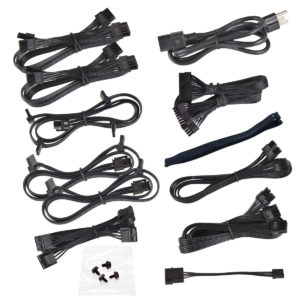 Fully modular –that’s compared to Semi-modular on the GQ. However, note that only 24-pin ATX motherboard cable is sleeved while the rest of others are flat.
Fully modular –that’s compared to Semi-modular on the GQ. However, note that only 24-pin ATX motherboard cable is sleeved while the rest of others are flat. - 100% Japanese capacitors
- Operating temperature range between 32°F to 122°F.
- Supports SLI/Crossfire.
- 8 to 10A on CPU rail.
- Teflon 120mm nano-bearing fan.
- No Over Temperature Protection. Either Seasonic is super confident with the reliability of their power supply under high heat that the GS does not need OTP, or they cut corner. However after many tests, we firmly believe on the quality of the GS series.
- ECO Mode.
- Good 12V regulation (<2%).
- 5-year warranty.
On paper, there are advantages and disadvantages between these two mid-range level PSUs.
Another important note is the GQ has better ripple suppression than the GS. Also fyi, the 550w/650w of GS series is based on a new platform design, while the 750w/850w is based on Seasonic’s own time-tested KM3 platform which is top notch in quality and super reliable.
If I have to sort, we’d essentially have G3/G+ > G2 > GQ > G1/GS. If you decide to go with the GS, get model 750w or higher.
We’re coming closer to the higher energy-efficient brackets and it’s getting a little more pricey every step. The P series, stands for Platinum, indicating 80-Plus efficiency is now up to 92%. Going from Gold to Platinum is merely a 2% difference in energy efficiency rating.
If you tend to max load the system every hour it’s running (such as gaming,video editing or intense server processing), then it might be worth it to spend the money upfront to save on electricity cost in the long run. Yet in my financially humble opinion, I’m ok with Gold level.
However now, don’t let my negative balance bank account affects your decision. Let’s see what’s good about the EVGA P family compared to previous series.
1. P2 Models
EVGA dimissed the production of P (or P1) and PS series awhile back and it’s not available for purchase anywhere, so we will be primarily focusing on the P2 units.
- Fully modular cable management.
- All cables are sleeved, not flat. Except the fun size floppy disk cable, some people think flat is sexy.
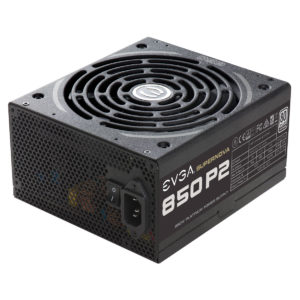 100% highest-quality Japanese capacitors
100% highest-quality Japanese capacitors- Operating temperature range between 32°F to 122°F.
- Supports SLI/Crossfire.
- 10A on CPU power delivery, up to 17A for 1600w model.
- 80-Plus Platinum means it’s up to 92% energy efficiency.
- Tight 12V regulation (< 1%)
- P2 general length is 165mm (6.5″) and up to 225mm (8.85″) for the top end model.
- Fan size is only 140mm, double-ball bearing type.
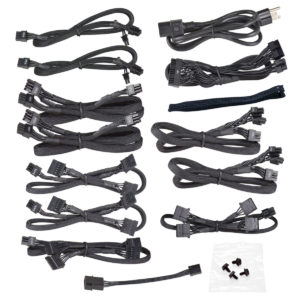 Support ECO Mode.
Support ECO Mode.- No OTP (Over Temperature Protection).
- 10-year warranty on all models.
- Support power-on self-tester.
- Manufactured by the Super Flower, aka the Leadex PSU platform. Gotta love them for good quality products. Some of the Seasonic’s particularly the new platform which was used in GS series to test the water, apparently has a bit of a mess soldering works in there and some clumsy heatshrink applications. Though I doubt if those really affects the performance, just to be fair.
At this point, I believe you start to see a pattern here. The G2, P2 series are manufactured by Super Flower based on their own Leadex platform. Because of the similar foundation, the general core components are likely the same and the differences are usually power efficiency, upgraded capacitors, coils, diodes, fan type, warranty and a few add-on features.
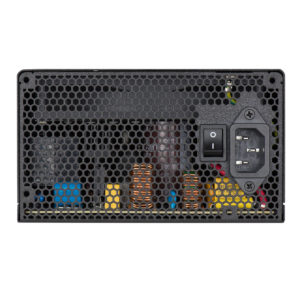 For low-end models without this, if the fan suddenly stopped working in the middle of the heated summer, this could quickly lead to a catastrophic, michael bay-inspired event. So it is a significant feature to prevent a PSU, especially PSU in heavy duty work/gaming PC, believing itself is capable of a detonable device. Nice try, Decepticon.
For low-end models without this, if the fan suddenly stopped working in the middle of the heated summer, this could quickly lead to a catastrophic, michael bay-inspired event. So it is a significant feature to prevent a PSU, especially PSU in heavy duty work/gaming PC, believing itself is capable of a detonable device. Nice try, Decepticon.
However in Super Flower’s defense, they say they only work with Autobot. Their power supply units have proprietary protection chips (thermistors?)/temperature protection wire between motherboard and fan that can safely trip the power to protect itself, you, your house, your Lamborghini knowledge and the entire universe 7.
Of course we didn’t believe that.
“It’s all guilty until proven innocence”, strongly advised by an officer who just got paid administrative leave for an internal investigation and also agreed by Luke Cage according to his own personal experience. So anyway, we put the P2 850W under SLI test after disconnecting its fan. Eight minutes in with no fan and GTA V, temperature reached 47°C according to our Thermal leak detector (tiny review) and the system shut down. I fired it back up and it shut itself down again. It started normal once we used a leaf blower to cool it off. My wife thought I wanted to show off to the neighbor my new 60V leaf blower and she’s dead right. So I guess that turns out well and Super Flower’s claim is validated, at least from my own anecdotal experiment.
Now you should worry about other no name brand unit without this feature, whether they could do the same.
- EVGA 750 P2 - "Platinum Performance" - Fully Modular to reduce clutter and improve airflow
- 80 PLUS Platinum certified, with 92% (115VAC) / 94% (220VAC~240VAC) efficiency or higher...
- 100% Japanese Capacitors ensure long-term reliability
- Fan Size / Bearing: 140mm Double Ball Bearing
1. PQ Models
If you are looking for some 80-PLUS platinum certified power supply unit but after a trip to the grocery store renders the P2 unaffordable forever, then come join me in PQ club!
But certainly don’t get me wrong, PQ is not a cheaply made PSU by any means. It belongs to the premium brackets. But those instant ramen cups aint going to buy themselves and inflation aint waiting.
So first, what’s the difference between EVGA P2 and PQ series? It might not be fully-modular, might not have 17A CPU rail on the flagship model like the P2’s, only flat add-on cables, no power-on self-tester, and longer in size. But despite of all that, it has a really better fan that.. ventilates well.
Air-bending aside, the PQ also has a great ripple suppression since it’s based on the same GQ platform we learned above. It does an even better job than the Seasonic-made GS on minor rails, 12V regulation wise. On top of that, you also get ECO Mode, OTP, 10-year warranty and extra left in the wallet for a dozen avocados for dessert. Speaking of avocados, put 1 x avocado, 5 x tsp of condensed milk, 3 x cup of milk, ice cubes all in a blender and thank me later.
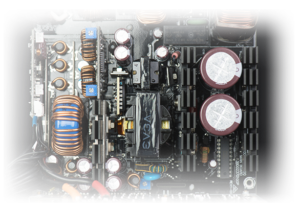 Semi-modular cable management.
Semi-modular cable management.- All optional power cables are flat. Except hardlined cables are sleeved.
- 100% Japanese capacitors
- Operating temperature range between 32°F to 122°F.
- Supports SLI/Crossfire.
- 10A on CPU power delivery, up to 12A for 850w model.
- 80-Plus Platinum.
- Tight 12V regulation (< 1%)
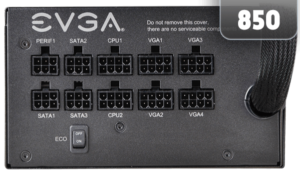 PQ length is 180mm (7″) for both 750w and 850w models.
PQ length is 180mm (7″) for both 750w and 850w models.- Fan size is slightly smaller, only 135mm, but it is fluid-dynamic bearing.
- Support ECO Mode.
- Support OTP (Over Temperature Protection).
- 10-year warranty on all models.
- No power-on self-tester.
- Manufactured by FSP GROUP.
- 80 PLUS Platinum certified
- Heavy-duty protections, including OVP, UVP, OCP, OPP, SCP, and OTP
- Semi-Modular Design to reduce clutter and improve airflow
- EVGA ECO Intelligent Thermal Control System eliminates fan noise at low to medium loads
The 850 P2 at the time of this freaking long article written is going for $159 on Amazon, while the 850 T2 cost about $229. Truly, there is a premium cost for going with the top of the line power supply and that’s $70 more than the next step down.
However, I bet if you seriously invest in a pair of 1080 Ti or RX 580X which cost over $1000, then it’s sensible to get the best PSUs that could handle them well enough. So let’s see what good the T2 has under its sleeved cables; a cap maybe?
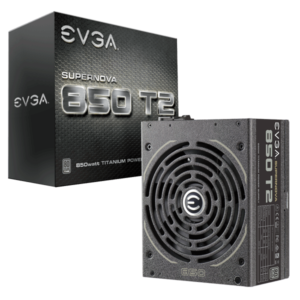 Fully modular cable management.
Fully modular cable management.- All cables are sleeved. The PCI-E cable has a built-in Japanese capacitor on one end under its sleeve. Really.
- 100% highest-quality Japanese capacitors
- Operating temperature range between 32°F to 122°F.
- Supports SLI/Crossfire.
- 10A on CPU power delivery, up to 17A for 1600w model.
- 80-Plus Titanium means it’s up to 94% energy efficiency.
- Tight 12V regulation (< 1%)
- Very long. She said it’s 7″.
- Fan double-ball bearing 140mm in size.
- Support ECO Mode.
- Support OTP (Over Temperature Protection).
- 10-year warranty on all models. Sometimes EVGA runs promo that adds 2 years on top of the existing 10-year warranty.
- Support power-on self-tester.
- Manufactured by the Super Flower.
- EVGA 850 T2 - "Nothing Beats Titanium"
- 80 PLUS Titanium certified, with 94% (115VAC) / 96% (220VAC~240VAC) efficiency or higher...
- Fan Size / Bearing: 140mm Double Ball Bearing
- Heavyduty protections, including OVP (Over Voltage Protection), UVP (Under Voltage...
That’s it folks, this article has finally come an end. It isn’t so bad after all right? Sometimes, we need a long read just to understand things once and for all. The top of the line –T series, has the best energy efficiency money can buy. But that’s about it.
Reliability and quality-wise, anything from Gold level and above are pretty good –especially those made by Super Flower. On top of that, with the long warranty, you probably upgrade the machine a few times before you have to invest in another as decent power supply.
II. Specs Detail
The next page is a bonus for those who like to dig deeper into specs between these EVGA power supply units. Big screen is recommended.
On a side note, if you prefer TL;DR-type articles be sure to check out the Tiny review section for some random goodies that we have wasted money on. Our most dedicated editor went homeless just now. Thanks for reading!
Tiny Review: 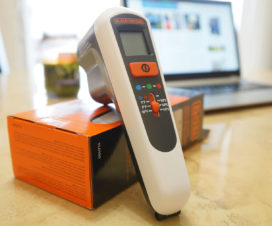 Using a Thermal Leak Detector to check for air draft, cold air leakage and how angry your wife is.
Using a Thermal Leak Detector to check for air draft, cold air leakage and how angry your wife is.





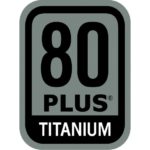
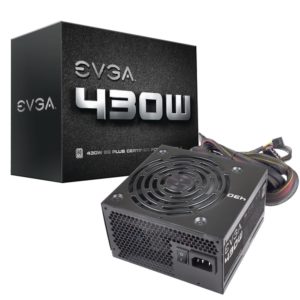
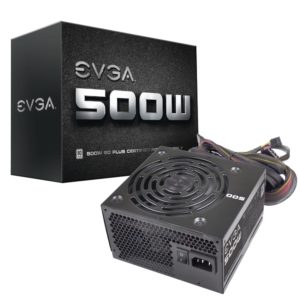
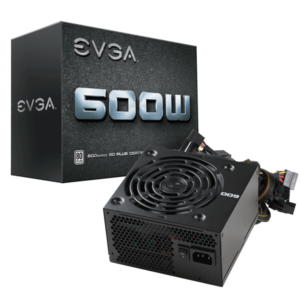
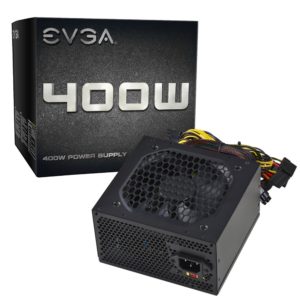
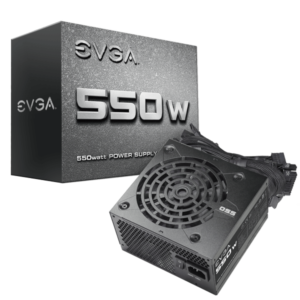
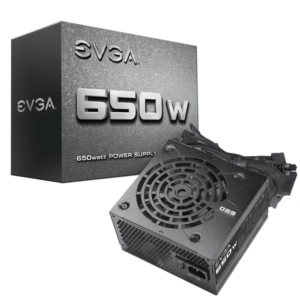
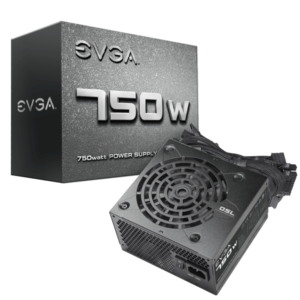




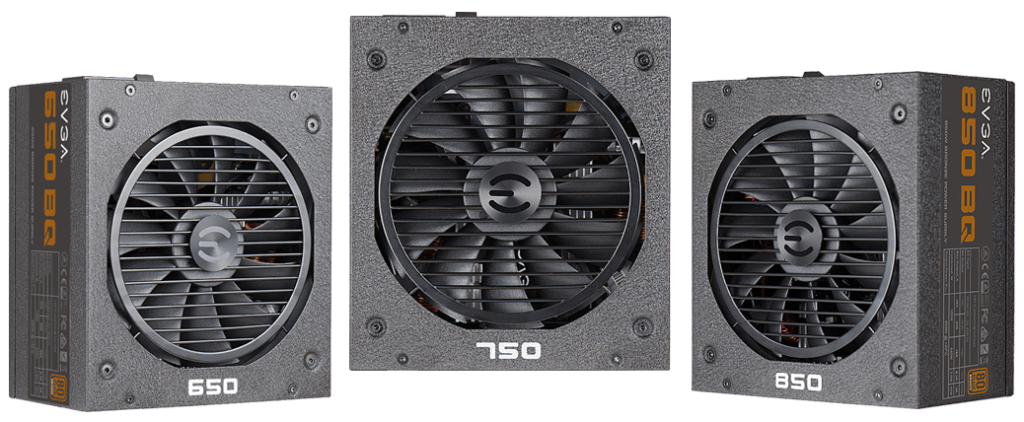





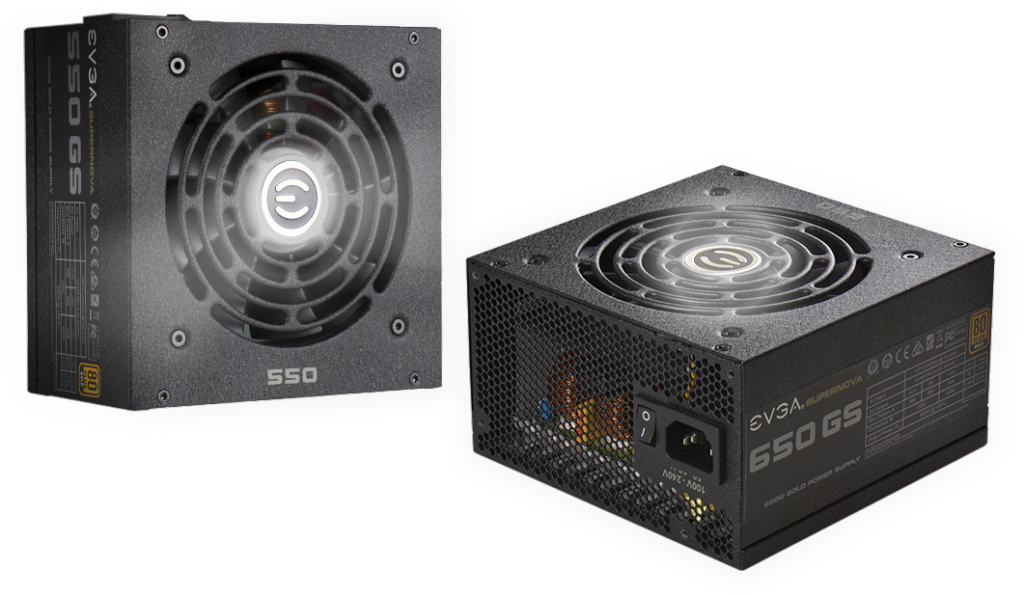
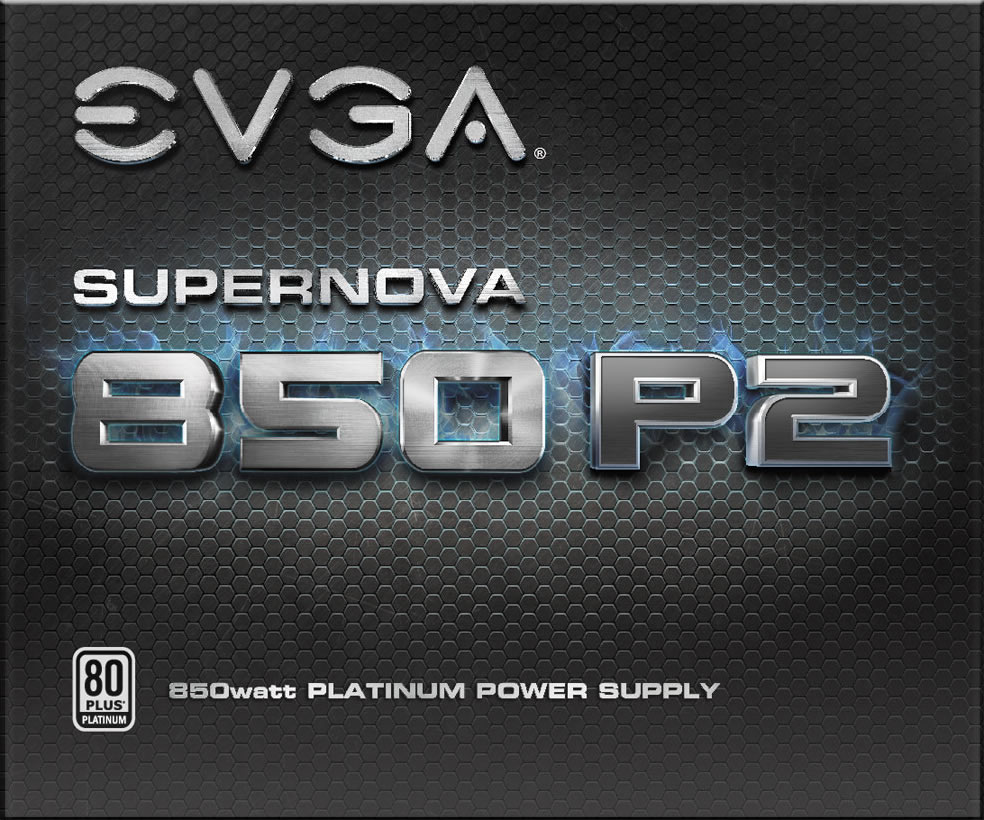




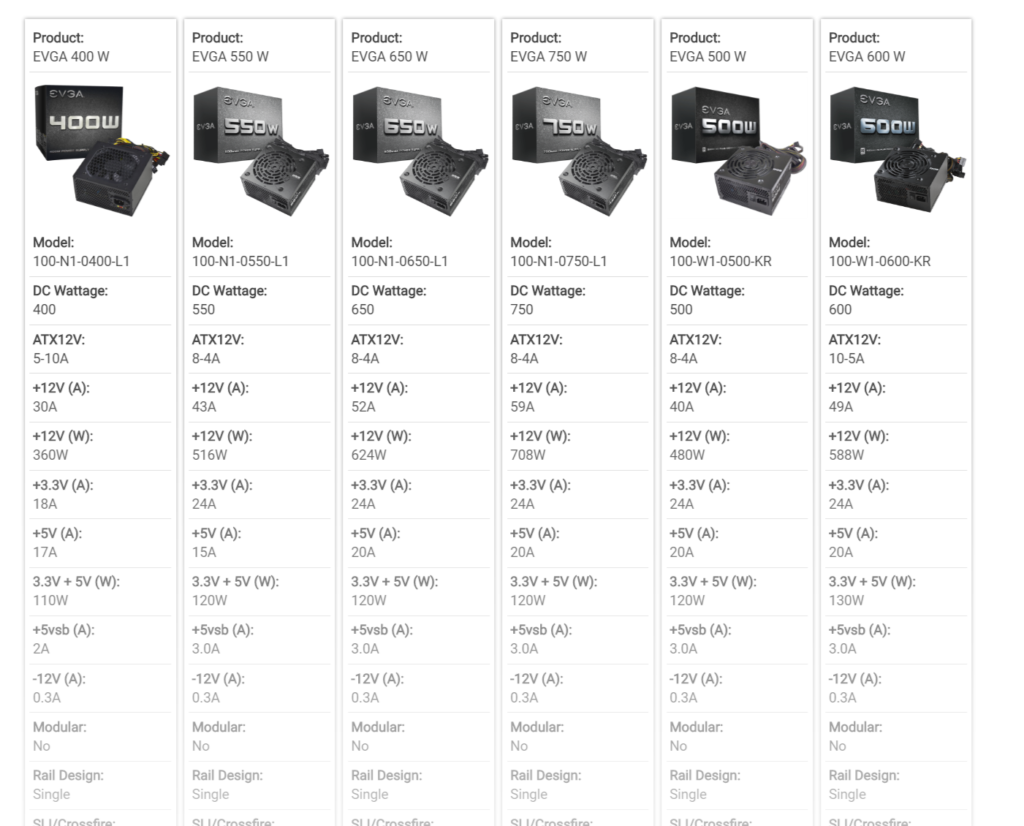
P3, P5, P6 – These are outdated!
Air-bending aside, the PQ also has a great ripple suppression since it’s based on the same GQ platform we learned above.
Yes, that’s good power supply
What about the GT AND the G6 and the G7 ? :( … im still ok dark
You don’t seem to produce anymore SF products – what is equivalent ?? I am building a XTIA based computer and need an SF or equivalent 750W power unit
You are the BEST !
P3, P5, P6 oh my this is outdated
This is a PSU, so who cares about p3, p4, p5?
This article is relevant in Feb 2022
Where does the GA series fit in?
This was a very useful article on the many different tiers and models EVGA has on their PSU’s, there’s some that have come out since that I am curious about, primarily the P5 series of Platinum PSU’s, I hadn’t seen them before and they’re decently priced which has me wondering if it’s because they’re more budget options for Platinum rated PSU’s or if it’s because they’re not that good.
EVGa Best of the best of PSU
And what about the BA line. Line B and A of Amateur? Or what does that A mean? .. And what differences are there with the other B?
This article is very beneficial for us. And EVGA PSU’s all products are very reliable, so thanks to this article.
EVGA messed up with these names so badly that the basic customer will never even want to check the difference between them.
Wow, this article is 80+ Titanium, very well done, thank you for taking the time to gather all that data.
Yeah! Well said Luis. This is Titanium level technology writing!
Wow this is easily the best article I have ever seen on EVGA PSU’s, have had my 550 G2 for a couple years now and have been very happy with it. Sure wish I had read this back when I was doing my build, comparing page after page on newegg and amazon was crazy. Thank you so much for putting this together will be a EVGA patron for sometime and definitely coming here first for my next build!
Thanks for this.
Do any of the BRs have the quiet Teflon fan that the 650-and-above BQs have?
Also, should I assume that B3s at 650 and above have the Teflon fan? If so, do any lower B3s have the fan?
Great article. Really good. The long-form article format is alive and well here.. for the benefit of us all. The TL;DR is for ppl without an sufficient attention span and they will make less informed decisions because of it.
Your site is fantastic, keep it up!
I’m deciding on a basic test-bench PSU atm. It will be only for testing MB, CPU, GPU on a table open to the 75 degree air in the house. I’m figuring even an N1 or W should be fine. Right now Newegg has some decent deals on EVGA psu with rebates.
Thanks again!
Hmmm. Hmmmmmmmmmmmmmmm.
Nice article. Evga is annoying after reading this.
Great article, but a few things need more explanation:
1.I don’t know what “hardlined cable” is.
2. “AMD has done a super great job of coming back in the fight with Intel lately.” I don’t see a date on this article, so I have no idea what “lately” means.
3. EVGA now has a “BR” series also. Maybe this article could be updated to include it.
Thanks!
Good points, sir.
1. Hardlined cables are non-detachable power cable from the unit.
2. Lately means as of late.
3. The moment this article was published (Jul ’18), EVGA rolled out the BR series one day later as a prank we deserved because #2. Perhaps once we go through all the BR models, I’ll have it added in this guide asap. Essentially EVGA found an aisle between the B and BQ series so they created the budget BR. Sorry for the inconvenience they cause.